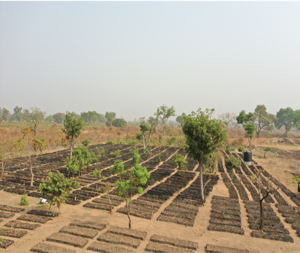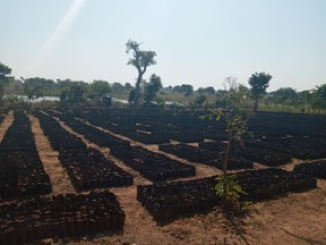Current charcoal demand in Ghana
About 37% of energy consumption in Ghana is derived from biomass, which is mainly in the form of charcoal, (Source: GSS, 2019).
The demand is higher in the urban areas making 50% respectively of the total demand and it is expected that population growth, especially in the cities, will further increase the demand for charcoal by 2050 to 2.8 million tons. While in the year 2000 it was still less than 1 million tons of charcoal, in 2012 it was already more than 1.4 million tons.
Presently in Accra, 470,000 households consume charcoal and in Kumasi, about 443,000 households use it as a primary cooking fuel (Source: National energy statistics Ghana, 2016). Statistics from Food and Agriculture (FAO), 2014, indicate that Ghana contributes 3.4% of the global charcoal production, making it the sixth largest producer of charcoal in the world.
Ghana has one of the highest deforestation rates in the world, losing about 2% of its forest cover annually (www.globalforestwatch.com). Charcoal production has been identified as a major driver of deforestation and forest degradation in the country because the charcoal sector remains informal and poorly regulated with an unsustainable and inefficient production approach (Source: Ghana’s National Forest Reference Level, 2017).Approximately 30 million cubic meters of wood from natural forests are transformed into charcoal every year.
The project “Forest Landscape Restoration through a Sustainable Wood Energy Value Chain” implemented by GIZ and IUCN NL on behalf the German Federal Ministry for the Environment, Nature and Nuclear Safety (BMU), supports the Ministry of Lands and Natural Resources, the Ministry of Energy and other partner institutions in Ghana in restoring forest landscapes together with smallholder farmers and organized producer groups in 10 communities in the Savannah and Bono East Region.

Through the sustainable production and efficient use of energy wood, forests in Ghana will be preserved and restored, thus contributing to the implementation of the national climate policy and to the improvement of the framework conditions for sustainable forest management and energy supply.
Introduction of improved Kilns
Under Component 3 of the project energy-efficient technologies for charcoal production and its use will be introduced to the project communities. It is estimated that, 400,000 people and over a million dependents are engaged in charcoal production in the northern and transitional zones of Ghana (Energy Commission, 2006). The project supports therefore farmers and charcoal producers in the wood energy value chain to increase efficiency in the charcoal production process aiming at avoiding tree biomass wastage and reduced deforestation.
Traditional Earth Mound Kilns, which are commonly used in Ghana for the charcoal production, have a low efficiency rate of 8-12% meaning that for the production of one ton of charcoal ten tons of wood need to be harvested. With improved charcoal kilns conversion rates of 25-35% are possible and the demand on wood could be reduced by more than 60%.
To select suitable types of improved kilns to be introduced in the communities, a newly developed metal kiln was constructed and tested in collaboration with the CSIR Institute of Industrial Research in Ghana. The kiln in form of a box was invented by Dr. Chris Adam from Germany who supervised the construction and test in Ghana. Advantages of the box-kiln are its easy construction and handling.

It can be operated by one person and the raw materials are easy to find in the Ghanaian market with moderate prices. Two first tests were conducted between the 11th and 19th May and showed promising results. The production process took around 48 hours including the cooling down and conversion rates were around 30%.
Further test are needed to validate these results and specify production and maintenance costs. After comparison with other established improved kilns selected models will be distributed in the project communities within the northern and transitional zones where charcoal production is massive.
>>>the writer is a team leader for the Forest Landscape Restoration project at Deutsche Gesellschaft für Internationale Zusammenarbeit (GIZ) GmbH in Ghana
References
- Adam Box-Kiln (2019). New Improved kiln for charcoal production available at Privat – Box-Kiln (new) (biocoal.org)
- Energy Commission (2006). Strategic National Energy Plan—2006-2020 (SNEP). Accra. Available from http://energycom.g
- Energy Commission (2016). National Energy Statistics 2000-2013. Accra. Available from http://www.energycom.gov.gh/
- Food and Agriculture Organization (2010). Ghana – Forest Resources Assessment Available from http://www.fao.org/docrep/013/al513E/al513E.pdf
- Food and Agriculture Organization (2014). FAO statistics (Database). Available at http://data.fao.org/ref/262b79ca-279c4517-93de-ee3b7c7cb553.html?version=1.0
- Ghana Statistical Service (2019). Ghana Living Standard Survey 6 Report.
- Ghana’s National Forest Reference Level (2017).
- https://redd.unfccc.int/files/ghana_national_reference__level_01.01_2017_for_unfccc-yaw_kwakye.pdf
- Nketiah & Asante, (2018). Estimating national charcoal production in Ghana. Report under AX project.










